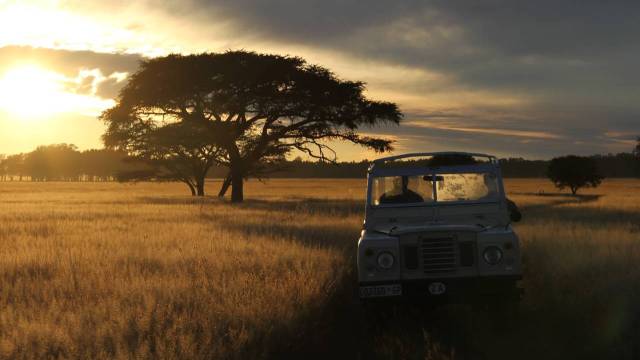
We take The Big Idea for granted these days, the way we do a lot of big ideas.
This notion that the balance of nature is thrown off when biodiversity is upset is widely accepted, but had to start somewhere. And it came to life with one college professor, wondering at the interconnection between predators and healthy ecosystems, watching a planet where such eco-systems had been altered and seemed to be crashing.
Writer Sean Carroll’s “The Serengeti Rules” is about that professor and the generation of 1960s scientists, his “dynasty” of researchers, who adapted and tested his “keystone species” theory in the far corners of the world.
Nicolas Brown’s film based on that book is a striking nature travelogue that breaks down the theory, recreates the test cases that first supported it and profiles the University of Washington professor, Bob Paine, and four influential researchers Carroll found who “went out into the world and followed their passions,” and grabbed hold of Paine’s “kick it and see” experiment.
That’s how Mary Power describes Paine’s idea of altering an eco-sytem, in the laboratory sense, to see see how things work by ‘changing nature.'”
Paine came up with the idea of a way to “test the importance of predators” globally by looking at tide pools with starfish.” If the “apex predator” of a tiny system disappears, the tidal pool or a prairie stream, an Aleutian Island, a part of a Venezuelan national park or the African Serengeti, everything changes, and usually for the worst. In a tidal pool, you can easily remove the starfish and observe what goes haywire when that happens.
Using actors in recreations, Brown shows how Power, drawn to studying the ecology of rivers and ponds in childhood, sees the role large mouth bass play in creating green, healthy algae-filled pools in an Oklahoma stream. They eat the minnows who would otherwise turn such pools barren.
Jim Estes became a Paine devotee as he undertook the study of sea otters on Amchitka Island, with no expertise in them or even the branch of science that encapsulates them. He noticed that the one island on Alaska’s Aleutians chain that had no otters left also had no large stands of kelp, the undersea “forests” that are a vital part of a diverse and healthy system in that part of the ocean.
No sea otters means there’s nothing to eat the urchins which devour the kelp.
John Terborgh, a lifelong “bird man” sees the desolation in parts of Venezuela caused when all the jaguars and eagles are gone. Species that eat leaf cutter ants are harmed, and the soaring ant populations in turn defoliate the place.
Tony Sinclair is the fellow who’s spent decades on the Serengeti, trying to figure out why Wildebeest populations were swelling, competing with buffalo, only to “level out” at a healthy, sustainable population for reasons the film reveals.
Often their areas of expertise did not line up with the work the various ecologists ended up doing. But observing, testing and studying are gifts they all shared as they grew in understanding this new idea, that predators at the top of the food chain “drive the system from the top down,” which Carroll notes was “a whole new way of looking at nature.”
The personal stories give the picture a sentimental side. Paine was interviewed just before his death in 2016. Power recalled her life changing, as a tween, when her myopia — she hadn’t yet gotten her first pair of glasses — disappeared when she got her first mask and snorkel and discovered the world in a pristine New Brunswick pond.
Terborgh remembers a trek to see a Bachman’s Warbler “a mythical bird” even in his in youth, and starting to wonder then at all the natural world going “under the bulldozer” and “about to disappear from the Earth.”
Sinclair, a Brit, is shown climbing aboard a zebra-disguised propeller plane to aid in a wildlife count as he wondered (back then), “Can a bird man study buffalo?”
Carroll’s hook, that these researchers who got their start in the “follow your bliss” 1960s, were more open to dabbling outside their specialties, more open to new ways of looking at nature and thus pioneers, is in here.
But what sticks with you are the beautiful shots of kelp forests and otters, ponds seen from the bottom up, Africa and South America both threatened and, when “corrected,” healed. That’s the upbeat message that Carroll identifies in the opening moments of the film.
And then there’s Paine’s mantra, worth repeating even though it’s been a part of our thinking about nature, ecology and the need for biodiversity.
“Predators DO matter”

MPAA Rating: unrated
Cast: Tony Sinclair, Mary Power, John Terbough, Jim Estes, Bob Paine, Greg Kriek, Ashlyn Jade Lopez, Samantha Nugent, Johnathan Newport, Mathieson McCrae, Jaime Excell
Credits: Written and directed by Nicolas Brown. An Abramorama release.
Running tie: 1:24
